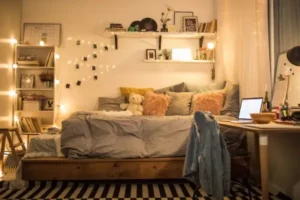Exploring How Design Reflects Cultural Heritage

Design is one of the most powerful ways humans tell their stories. Every pattern, color, and material choice reveals something about where you come from, what you value, and how you connect to others. Across centuries and continents, design has acted as a visual language that preserves history and expresses identity.
From architecture to textiles, cultural heritage continues to shape the way people build, decorate, and live. It reminds you that beauty is more than aesthetics; it is a celebration of the traditions and beliefs that define everyone.
Here is how design reflects the richness of cultural heritage and why it matters today.
Patterns as a Universal Storytelling Tool
Patterns are more than decoration. In many cultures, they serve as stories written without words. Ancient Egyptians carved geometric motifs to represent balance and order, while Celtic knots symbolized eternity and connection. In Indigenous art, repeating lines and shapes often depict family ties, nature, and spiritual beliefs.
When people bring these patterns into their homes or modern spaces, they are not only embracing beauty but also keeping these narratives alive. Each motif becomes a bridge between past and present, reminding you of the shared language of design that transcends borders.
Colors That Carry Meaning
Color is one of the most immediate expressions of culture. From the deep reds of Chinese celebrations to the calming blues of Mediterranean design, hues are chosen with purpose and emotion.
In many traditions, colors represent values or beliefs. For example, gold often symbolizes prosperity, green can stand for growth and renewal, and white is associated with purity and peace. Understanding these cultural associations allows you to design spaces that not only look harmonious but also feel meaningful.
When color is used with awareness, it transforms design from a visual choice into a reflection of shared humanity.
Craftsmanship as a Form of Legacy
The materials and techniques used in design also speak volumes about cultural heritage. Handwoven fabrics, carved wood, hand-painted ceramics, and intricately crafted rugs are more than decorative items. They represent generations of skill, care, and artistic expression passed down through families and communities.
For example, Persian and Turkish rug-making traditions reflect centuries of storytelling through craftsmanship. Each thread, knot, and pattern tells a story of place, pride, and patience. By choosing handcrafted pieces like these, you honor the artists who dedicate their lives to preserving cultural art forms.
In this way, craftsmanship becomes a living history lesson, one that continues to evolve with every creation.
Architecture That Mirrors Identity
Buildings often reflect the soul of a culture. The curved arches of Islamic architecture, the intricate woodwork of Japanese temples, and the colorful facades of Latin American homes all embody cultural values and philosophies.
Architecture is where culture meets function. It adapts to geography, community needs, and spiritual beliefs while celebrating artistic heritage. When you walk through a city rich with cultural diversity, each building becomes a chapter in a collective story of creativity and resilience.
The Modern Revival of Cultural Design
Today, designers around the world are rediscovering the beauty of traditional craftsmanship and blending it with modern aesthetics. This revival is not about imitation but interpretation. By integrating cultural influences into contemporary design, you celebrate authenticity in a fast-paced, digital world.
Modern interiors that include handcrafted items, natural materials, and symbolic patterns remind you that heritage is not a relic of the past but a living, evolving influence. When you choose pieces that have history behind them, you bring depth and meaning into your daily life.
Preserving Culture Through Design Choices
Your design choices have the power to preserve and promote cultural heritage. Supporting local artisans, learning about the origins of materials, and curating spaces that tell personal and collective stories all contribute to keeping traditions alive.
Even something as simple as choosing handmade pottery, woven textiles, or heritage-inspired rugs for your home can become a tribute to global craftsmanship. Design becomes more than decoration; it becomes participation in cultural preservation.
Final Reflection
Design reflects who you are, where you have been, and what you value. It tells stories that words cannot, connecting generations through texture, color, and form. When you surround ourselves with meaningful design, you honor the cultures that shaped it and continue the legacy of creativity and craftsmanship that makes humanity so beautifully diverse.
Whether through art, architecture, or handcrafted rugs, design becomes a powerful reminder that heritage is not just history. It is living beauty, woven into the spaces you call home.




